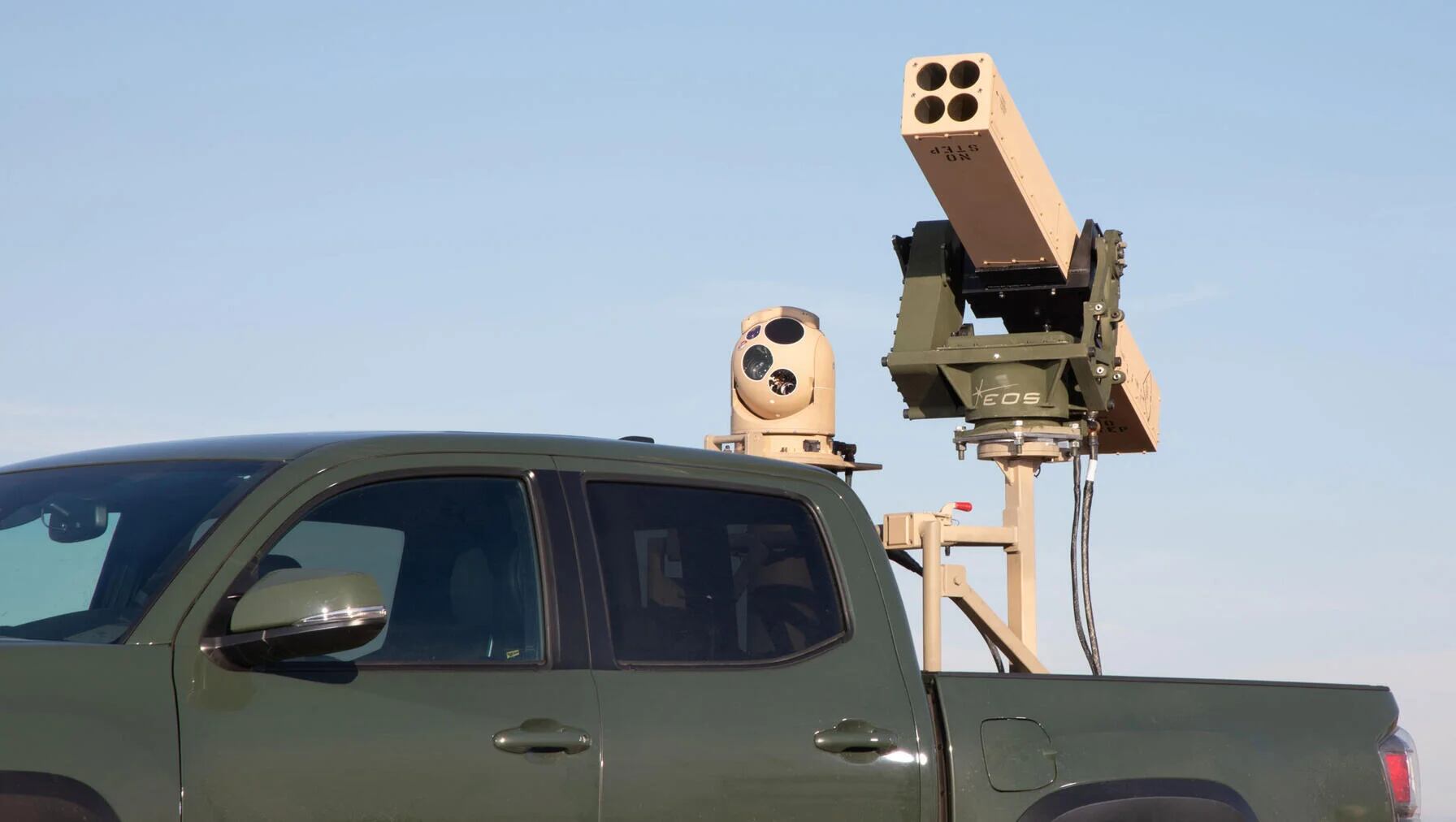Correction: A previous version of this article misreported the systems that make up Vampire.
WASHINGTON ― The U.S. is aiming to send Ukraine the “Vampire” counter-drone system by mid-2023, with a contract award expected within months, a Pentagon spokesman said Tuesday.
The Pentagon on Aug. 24 announced it would send the system, a laser-guided-missile launcher that can quickly be installed in a civilian truck bed, as part of a larger arms package. But despite Russia’s expanded use of Iranian-made kamikaze drones to target Ukraine’s power stations and other key infrastructure, the Pentagon hasn’t yet approved a contract to deliver the system.
“Air defense continues to be a priority, it’s something we’re going to continue to stay focused on and work as quickly as we can,” Pentagon Press Secretary Air Force Brig. Gen. Pat Ryder said. “In reference to the Vampires, we do expect a contract award within the next few moths, and right now we’re anticipating delivery to be in mid 2023.”
RELATED

The L3Harris-made Vehicle-Agnostic Modular Palletized ISR Rocket Equipment uses laser-guided munitions to hit ground or air targets, including unmanned aircraft systems. At the Association of the U.S. Army trade show here last month, the company displayed it with the Land-LGR4 rocket launcher from Arnold Defense and Electronics and the Advanced Precision Kill Weapons System laser-guidance package made by BAE Systems.
L3Harris expects to deliver the Vampire within the 9-month window requested by the Pentagon once the company is under contract, according to a company spokesman.
In recent days, the Biden administration has said Iranian troops are directly engaged on the ground in Crimea supporting Russian drone attacks on Ukraine’s infrastructure. Russia has been using a mix of missiles and loitering munition strikes over the last four weeks to deprive Ukraine of electricity as the temperature falls at the onset of winter.
For Ukraine and its allies, time is of the essence. Because new Russian units aren’t yet available, Russia’s ability to conduct ground operations is at an ebb.
“Now is when Ukraine’s partners must lay the groundwork for a military victory in 2023,” the London-based Royal United Services Institute said in a new assessment.
Even as Ukraine’s armed forces claim to have downed more than 1,400 enemy drones over the course of the war, Kyiv has pleaded for additional air defense systems. The U.S. and NATO have responded positively, as U.S. Defense Secretary Lloyd Austin cited the need at a NATO press conference last month and said Washington is working to link the patchwork of air defense systems in Ukraine.
Those systems include anti-aircraft Stinger missiles from the U.S. and others, Russian-made S-300 medium-range air defenses, Hawk medium-range air defenses from Spain and truck-mounted IRIS-T systems from Germany. The U.S. is on the verge of delivering the medium-range National Advanced Surface-to-Air Missile System, which is jointly produced by Raytheon and Norway’s Kongsberg.
On Tuesday, Ryder noted that Ukrainian forces have already shown that they can integrate air defenses, “particularly, for example when it comes to taking down a significant percentage of Iranian drones.”
Joe Gould was the senior Pentagon reporter for Defense News, covering the intersection of national security policy, politics and the defense industry. He had previously served as Congress reporter.






